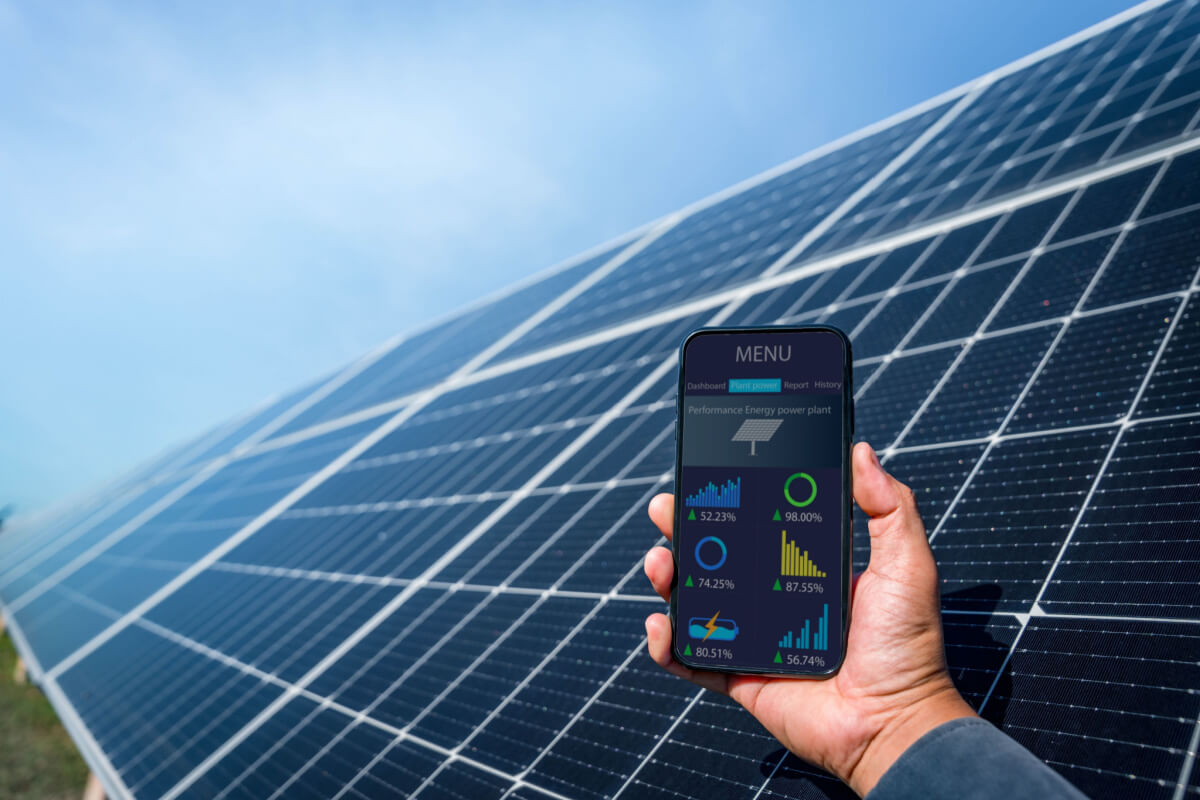KEY POINTS
- Solar monitoring systems help track the performance of solar panels, detect faults early and display real-time energy data.
- These systems will typically cost between $200 and $800 for installation, along with a small monthly subscription fee.
- A range of different solar monitoring systems are available. This includes products from manufacturers, installers and specialist providers.
Solar panels are a great way to minimise your energy bill and your reliance on grid electricity. While solar systems are excellent when working correctly, it can be difficult to tell when something breaks or when your panels aren’t working as efficiently as they should.
Often the first sign that your solar system isn’t working correctly is when you open your energy bill and see a higher charge than usual. The solution to this problem is a solar monitoring system that regularly tracks your products’ performance.
So, where do you get a solar monitoring system and is it worth the cost? This Canstar Blue guide covers everything you need to know about solar monitoring systems in Australia.
On this page:
Advertisement
What is a solar panel monitoring system?
A solar monitoring system provides real-time information on your home solar system. A good solar monitor can tell you how individual panels are functioning and whether one or more isn’t producing as much energy as the others. This could be useful to indicate whether there’s been an electrical fault that may be causing you to miss out on energy generation.
Solar monitors can also be used to track performance over time, troubleshoot problems and track your solar investment’s financial performance.
While many solar inverters offer basic monitoring on their display panels, a specialised solar monitoring app or software can give you access to more data on how your system is performing long-term.
How does a solar monitor work?
Solar monitors measure the performance of solar panels and report real-time data to help keep track of any changes and alert home or business owners to any potential issues with their solar system. A solar monitoring system will measure energy consumption, electricity production, grid imports and exports, and, if you also have a solar battery installed and its available charge and discharge power.
Some monitoring systems can tell you if a single micro-inverter fails or can compare solar feed-in tariffs and alert you if there’s a better option available. This information can be accessed using your computer, tablet or phone depending on whether the monitoring system uses online software or an app.
Features that may be accessible through your monitoring app or online software include:
- Solar system performance
- Household energy usage
- The amount of electricity that has been bought and sold
- Time stamps of when your system was loading energy
- Comparisons of how much energy should be produced and how much is actually being produced on any given day
- Alerts and fault diagnostics.
This information is designed to help customers make changes accordingly, whether it’s to get something fixed in a timely manner or change their usage to make better use of the energy generated by your system. A good solar monitoring system will also be able to tell you what your standby energy usage rate is, so you can identify how much power is being used and take steps to reduce it.
How much does solar monitoring cost?
Solar monitoring system costs include installation fees and an ongoing subscription cost. According to Solar Analytics, out-of-pocket installation fees can range from $200 – $800, while subscription fees are generally a few dollars a month.
Keep in mind, if the software alerts you to issues that would otherwise go unnoticed, it could pay for itself many times over.
What is the best solar monitoring system in Australia?
There are a variety of solar monitoring systems available for purchase in Australia. Some mainstream products include Enphase Enlighten, Fronius, Sungrow and Solar Analytics. Each solar monitoring system will offer slightly different pricing and features. As a result, it’s important to do your research so you can select the right system for you and your home.
Benefits of solar monitoring systems
The main benefits of installing a solar monitoring system include:
- Immediate knowledge of any issues: Rather than waiting for your next bill to tell you there may be something wrong, a solar monitoring system can immediately alert you if there is an issue, which means you can have it fixed promptly.
- Understanding your energy bill: If your most recent bill is significantly higher than anticipated, a solar monitoring system will be able to help you understand:
- where the increase came from
- whether the performance of your panels decreased
- if the household is consuming more energy
- if you’ve changed tariffs
- if there was a billing error.
- Energy consumption insights: By using a monitoring system, you’ll be able to see your own energy consumption. This allows you to be more energy efficient which may in turn reduce electricity bills.
Compare solar plans and prices
Here are some of the cheapest solar-specific deals from the retailers on our database. These costs are based on the Ausgrid network in Sydney but prices will vary depending on your circumstances. We show one product per retailer, listed in order of lowest price first. Annual price estimates assume general energy usage of 3900kWh/year for a residential customer on a single rate tariff. Price estimates exclude solar feed-in tariff credits. These are products from referral partners†. Our database may not cover all deals in your area, and please check retailer websites for up to date information.
Here are some of the cheapest solar-specific deals from the retailers on our database. These costs are based on the Citipower network in Melbourne but prices will vary depending on your circumstances. We show one product per retailer, listed in order of lowest price first. Annual price estimates assume general energy usage of 4000kWh/year for a residential customer on a single rate tariff. Price estimates exclude solar feed-in tariff credits. These are products from referral partners†. Our database may not cover all deals in your area, and please check retailer websites for up to date information.
Here are some of the cheapest solar-specific deals from the retailers on our database. These costs are based on the Energex network in Brisbane but prices will vary depending on your circumstances. We show one product per retailer, listed in order of lowest price first. Annual price estimates assume general energy usage of 4600kWh/year for a residential customer on a single rate tariff. Price estimates exclude solar feed-in tariff credits. These are products from referral partners†. Our database may not cover all deals in your area, and please check retailer websites for up to date information.
Here are some of the cheapest solar-specific deals from the retailers on our database. These costs are based on SA Power network in Adelaide but prices will vary depending on your circumstances. We show one product per retailer, listed in order of lowest price first. Annual price estimates assume general energy usage of 4000kWh/year for a residential customer on a single rate tariff. Price estimates exclude solar feed-in tariff credits. These are products from referral partners†. Our database may not cover all deals in your area, and please check retailer websites for up to date information.
Are all solar monitoring systems the same?
Like everything, there are some solar monitoring systems that are better than others. It’s generally recommended to get a solar monitoring system from a company that specialises in that software rather than purchasing one from a solar panel manufacturer.
There are three main types of solar monitoring systems:
- Solar monitoring from equipment manufacturers
- Solar monitoring from your installer
- Standalone home energy monitors
Some companies offer solar monitoring systems with their solar inverter sales, particularly for micro inverters, but, as mentioned above, it is generally recommended to go with a standalone home energy monitor from a company that specialises in software development. If your manufacturer happens to do both, then it is a win-win.
Are solar monitoring systems worth it?
Whether you get a solar monitoring system installed will depend entirely on your energy needs and budget. A solar monitoring system alerts you if there are any issues, and allows you to track performance and your own energy usage. This helps to decrease energy bills and keep your solar panels performing at the optimum level.
That’s not to say that you can’t achieve these outcomes without solar consumption monitoring, but it does provide just that little bit of extra security when it comes to the performance of your solar system.
If you haven’t already had solar panels installed but are keen to learn more about them, including the financial benefits and options available to you in Australia, read our guide below.




Share this article